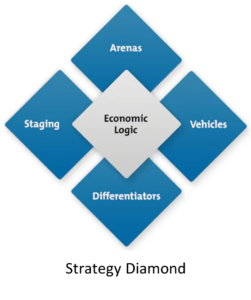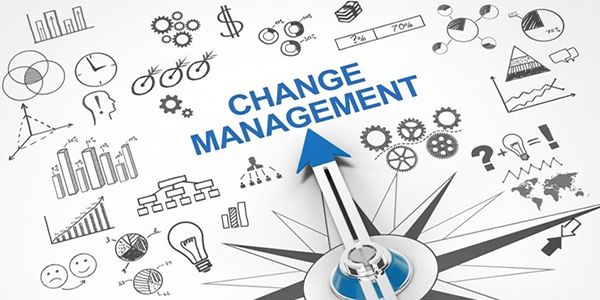From the Sponsor’s Desk – How to Succeed Swimming Against the Current
“It takes a touch of genius – and a lot of courage – to move in the opposite direction”
Albert Einstein
Think about it! If you’re managing or otherwise involved with a project, why is it the way it is? Why are the goals what they are? Why does the scope include the features and functions it does and exclude others? What methodologies, processes and practices are being used to deliver the change? Why not others that have provided value in other circumstances?
You’ll find that projects where the answers to these questions are widely known and play an integral part in the ongoing management of a change have a much greater chance of success. That transparency lends clarity to the countless decisions that follow. And if the project is delivering a solution that deviates from the usual tried and true, that transparency is even more critical. That was the case in the Nuts for Cheese post. It’s also true in this story, How to Succeed Swimming against the Current.
The Situation
Randy Crane (also known as The Fearless Marketer) received a call from a small packaging company looking for his help. Randy is a sales and marketing specialist who has collaborated with companies to develop and execute their communication strategies and plans over more than 25 years.
The small company, let’s call them PackageCo, helped other organizations create packaging solutions for their products. It worked as a matchmaker, developing packaging designs, recommending materials and sourcing the appropriate equipment for their clients’ packaging needs.
PackageCo was being squeezed on price by its bigger competition, resulting in smaller and smaller margins and jeopardizing the long-term viability of the organization. The owner looked to Randy to help chart a new course that would put them on a new, firm footing going forward.
The Goal
To develop and implement a new operating model for PackageCo that would ensure its long term viability. The strategies, plans and relative priorities should be delivered within three months with implementation to follow as quickly as financially and logistically possible.
The Project
After their initial meeting, Randy arranged twice weekly meetings with the PackageCo owner, each lasting 60 to 90 minutes. The initial focus was on re-establishing the company’s goals.
The company owner was getting bombarded with day-to-day issues. Initially, it made it very difficult for her to keep her attention focused on the goal. The two short sessions per week set an established pattern, a rhythm, which allowed her to focus on the future, which gave her time to reflect, yet still deal effectively with the day-to-day.
The company had a small staff of six employees who were responsible for all aspects of the company’s operations. The owner and her staff were in daily contact on an ongoing basis. They had the same values, they shared a common culture and they all knew the operations and challenges inside and out. The goal of the sessions was to reset the owner’s frame of reference to a more sustainable future operating model. Randy felt that including other staff at this point would increase the resistance factor and impede progress. The owner agreed, but kept her staff appraised of the progress being made.
Randy started with a SWOT analysis (strengths, weaknesses, opportunities, threats). It was important to take a comprehensive view of the company’s strengths and weaknesses, to determine what internal and external opportunities were available and what threats they were facing. The analysis confirmed that the company had numerous opportunities to sell their services, but they were getting squeezed by their larger competitors on price. It also confirmed the need for changes in the products and services they were selling to differentiate them from the competition.

They then created a Strategy Diamond to address the following five elements: Arenas – Where to be active? Vehicles – How to get there? Differentiators – How to win in the marketplace? Staging – What sequence of moves to take? Economic logic – How to generate revenue and make a profit? The model included the main elements of a strategy, and how they fit together. These elements worked together to form a cohesive, overall whole.
During this process, Randy and the owner found that many manufacturers of food and consumer products were interested in composable and recyclable packaging, something that the competition was not offering at that time. Even though the cost of the packaging could be more expensive, they believed PackageCo customers could use this new found packaging to promote themselves as an eco friendly brand and help save the planet.
Finally, Randy and the owner created a BHAG (Big Hairy Audacious Goal) to promote the PackageCo as the only eco friendly packaging company on the planet and get the customers to believe that saving the planet was a worthy cause to be a part of.
With the SWOT results, the Strategy Diamond framework and BHAG top of mind, Randy and the owner set about evaluating their plan. They made a list of all the advantages and benefits that the customer could receive by converting to a new eco friendly packaging model. The list included more than thirty items. Not wanting to overwhelm the owners, they pared it down to the top ten.
Advertisement
[widget id=”custom_html-68″]
They developed a list of prospects active in the Arenas identified in the Strategy Diamond exercise and created some simple marketing materials that were directed specifically at the prospects’ owners or senior executives. The contact was made through an e-mail marketing campaign with a link to a short survey and feedback form. Each company that responded to the survey was sent a nicely designed brochure outlining the benefits to the prospect’s company, their customers and the environment and included the Top 10 benefits their company would receive for participating in this unique program.
Randy’s focus throughout the process was to guide the way, to keep the desired end result always front and center, to provide understanding, to ask the questions that no one else was willing to ask, to anticipate potholes and pitfalls, to articulate points of disagreement and agreement and to celebrate successes.
The Results
The initial cut on PackageCo’s goals, strategies, plans and priorities was delivered within the three month target. PackageCo’s owner and senior staff were engaged and energized with the results. The company was pivoting from its traditional role of selling the usual packaging solutions to saving the planet with a commitment to compostable, recyclable and reusable solutions.
Randy required another six weeks to prepare the marketing materials and get the approvals from the PackageCo owner. Within two weeks from the day that they sent out the marketing materials and survey, they received the first positive response. Another eleven followed within fourteen days.
The initial strategy was to get one or two customers to convert to the eco friendly model and learn from that experience. After the launch of the e-mail survey, with twelve companies expressing interest. PackageCo’s salespeople, by now fully conversant with the benefits of the new packaging model, approached the interested companies. It was important to explain to the customers that the cost of their packaging could change but the benefits in increased sales and customer loyalty and retention should exceed any increased cost in the long term.
From the initial twelve potential customers, four decided to go with the new eco friendly model. The first company to make the upgrade was a large pet food company. They had always used a printed paper bag with a wax coating inside and outside. Even though the bag was made from paper, because of its printing and wax coating it was only destined for landfill.
PackageCo recommended a pulp based bag with the printing done with soy ink (food grade). The glue that was used to seal the bag was a natural based glue (also food grade). PackageCo’s study showed the overall compostability of the bag would take place over a period of 12 months to dirt in an industrial compostable facility.
The pet food company selected three target geographies for their test, in France, Germany and Austria. Over the six month test period, the sales in the test areas increased by 4% to 6%. That was enough of an increase for the company to deploy the packaging throughout the entire organization.
PackageCo documented the results and shared them with their customers and prospects. Within three months, there were four more companies ready to start a pilot project. Part of the solution also included a redesigned web site and a LinkedIn campaign to alert PackageCo’s current and prospective customers of the bold new way. Throughout the exercise, Randy helped facilitate the transformation of the vision and the delivery of the new reality.
How Great Leaders Delivered
Change is difficult. Fundamental change is even more challenging. PackageCo’s leader recognized the perilous situation they were in and the need for immediate action. They took it. With Randy’s help, the following approaches propelled them on their successful journey.
- Know your business – Randy helped the PackageCo owner tap into her own insights and the perspectives of customers and prospects to reshape the company’s directions.
- Seek outside opinions – Using the email marketing campaign and survey strengthened the company’s relationships with its customers and built a bridge for prospects to access their products and services.
- Use tools and techniques that have delivered results – Randy’s use of proven tools like SWOT, the Strategy Diamond and BHAG gave the owner comfort that he had the knowledge and experience to help her and her company. The tools also accelerated the delivery of the new strategic plan by providing a solid analytical foundation for their work. They didn’t have to reinvent the wheel.
- Engage with staff, customers – Even though the company’s staff were excluded from the strategy deliberations, the owner’s regular updates kept them up to date. Their passion for the program grew as they witnessed the owner’s increasing enthusiasm for the new direction. Engaging their customers and prospects with the email campaign and survey and subsequent sales calls helped cement the relationships and build demand for their new world view.
- Use a 360 degree view – Through the use of the previously mentioned tools and the short, twice weekly planning sessions, Randy was able to lead the owner through a series of holistic views of the company’s current state and future possibilities. Each session built upon the previous work to provide a comprehensive, layered and shared understanding of current and future opportunities and the chosen way forward.
So, if you’re involved in a transformation or a challenging change with aggressive competitors breathing down your neck, consider the approach Randy Crane and the PackageCo’s leader took to survive and play a new day. Also remember, use Project Pre-Check’s three building blocks covering the key stakeholder group, the decision management process and the Decision Framework right up front so you don’t overlook these key success factors.
Finally, thanks to everyone who has willingly shared their experiences for presentation in this blog. Everyone benefits. First time contributors get a copy of one of my books. Readers get insights they can apply to their own unique circumstances. So, if you have a project experience, a favorite best practice, or an interesting insight that can make a PM or change manager’s life easier, send me the details and we’ll chat. I’ll write it up and, when you’re happy with the results, Project Times will post it so others can learn from your insights.







